Valley Children’s Commitment to Energy Resilience and Environmental Stewardship

Goals include net-zero carbon emissions and the largest pediatric healthcare-based renewable energy microgrid in the country
Our Commitment
At Valley Children’s, we believe caring for kids means caring for the world in which they’ll grow up. As Central California’s leading pediatric healthcare provider, we’re weaving sustainability into everything we do. By using resources wisely, embracing new ideas and working together, we’re reducing our impact on the environment, supporting the well-being of our community and helping to build a brighter, healthier future for all.
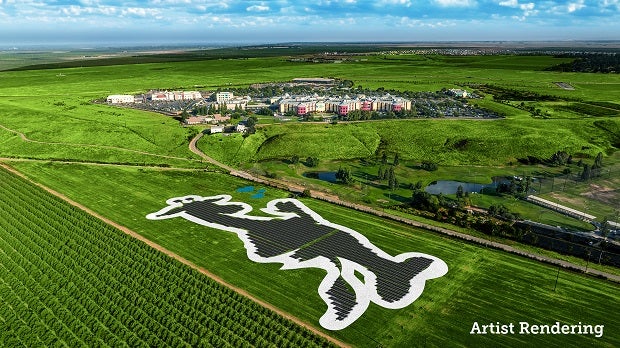
Artist's rendering of the future solar field on Valley Children's Hospital campus in Madera
Greenhouse Gas Inventory
Valley Children’s is now implementing plans for a bold new environmental strategy to accomplish two strategic priorities - to build energy resiliency for hospital campus operations and to drive efforts for improved air quality in the region. The plan will reduce greenhouse gas emissions by 50% by 2030 and will achieve net-zero carbon emissions by 2050. It also includes the installation of the largest pediatric healthcare-based renewable energy microgrid in the country.
Valley Children’s tracks and reports greenhouse gas emissions annually. In 2024, Valley Children’s achieved a 9% reduction in total emissions compared to the prior year, with significant progress is Scope 2 and Scope 3 categories.
In FY2024, the greenhouse gas emissions for Valley Children's Healthcare amounted to 74,364 Metric Tons of CO2 equivalent (MTCO2e). Scope 1 emissions totaled 6,266 MTCO2e, Scope 2 emissions totaled 5,547 MTCO2e, while Scope 3 totaled 62,551 MTCO2e.

The table below lists Valley Children's Healthcare's enterprise-wide emissions sources from the highest percentage of total emissions to the lowest. This list serves as a guide for prioritizing action, focusing on addressing the larger emissions sources first.

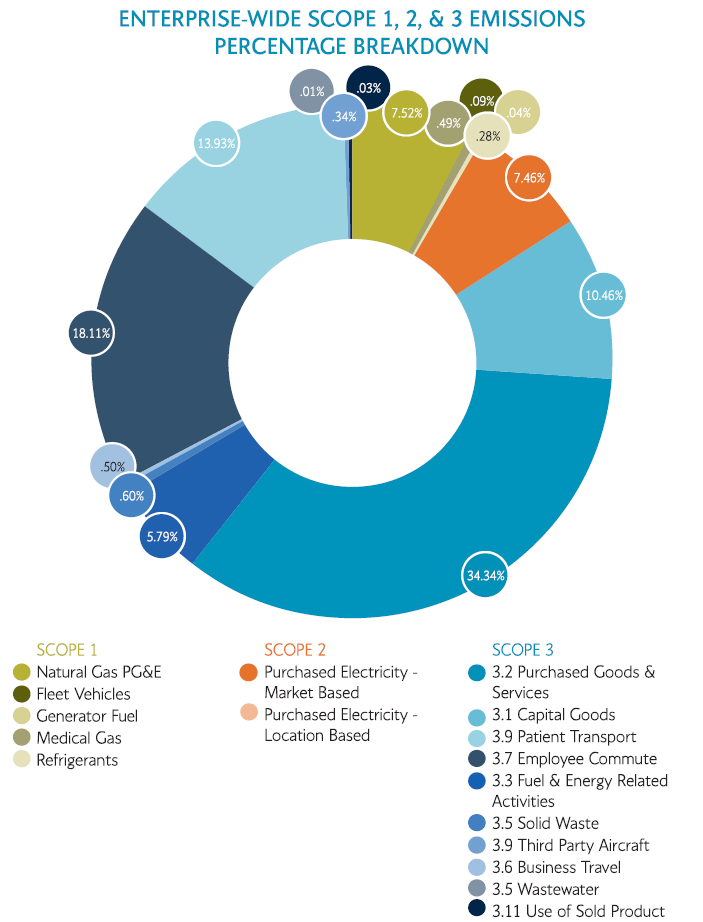
Valley Children's Hospital FY 2023 GHG Emissions Inventory
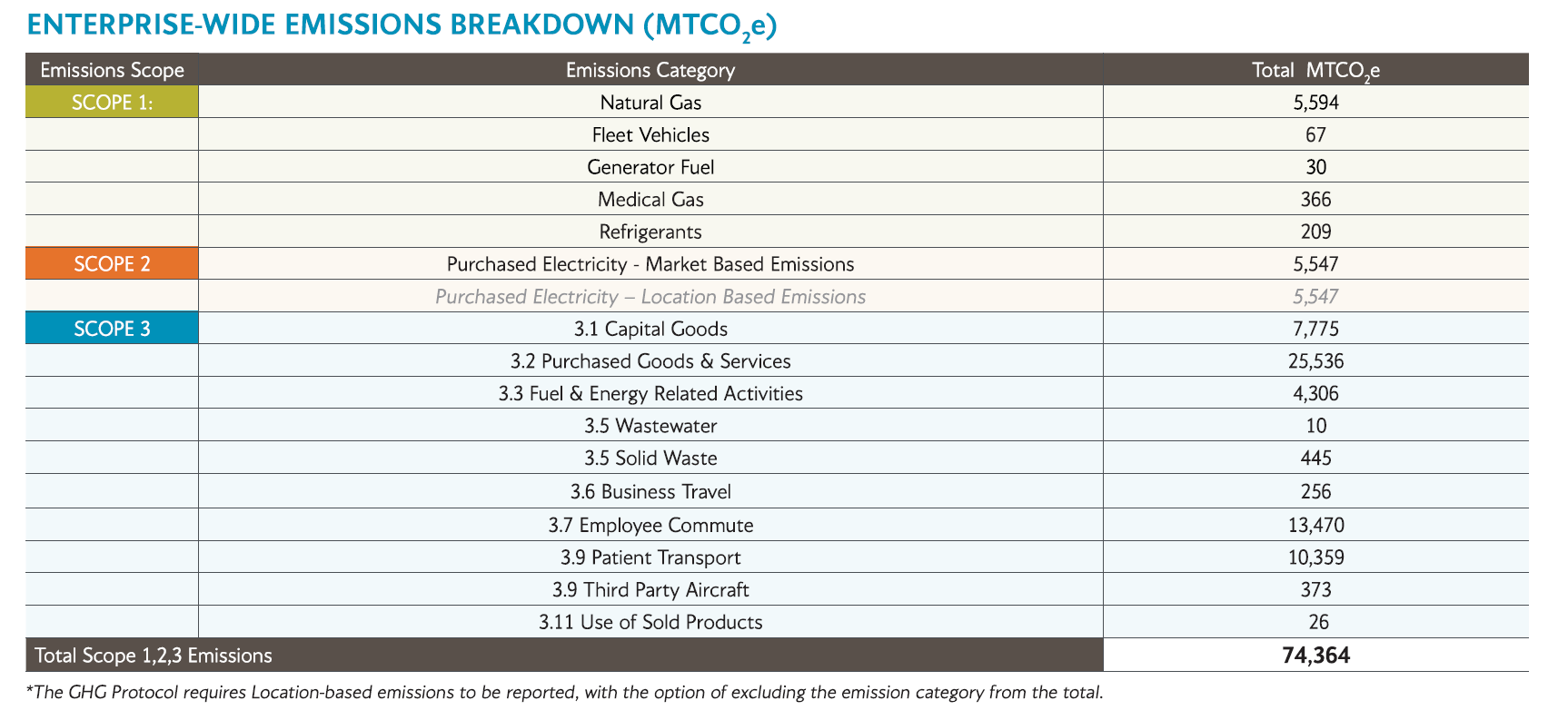
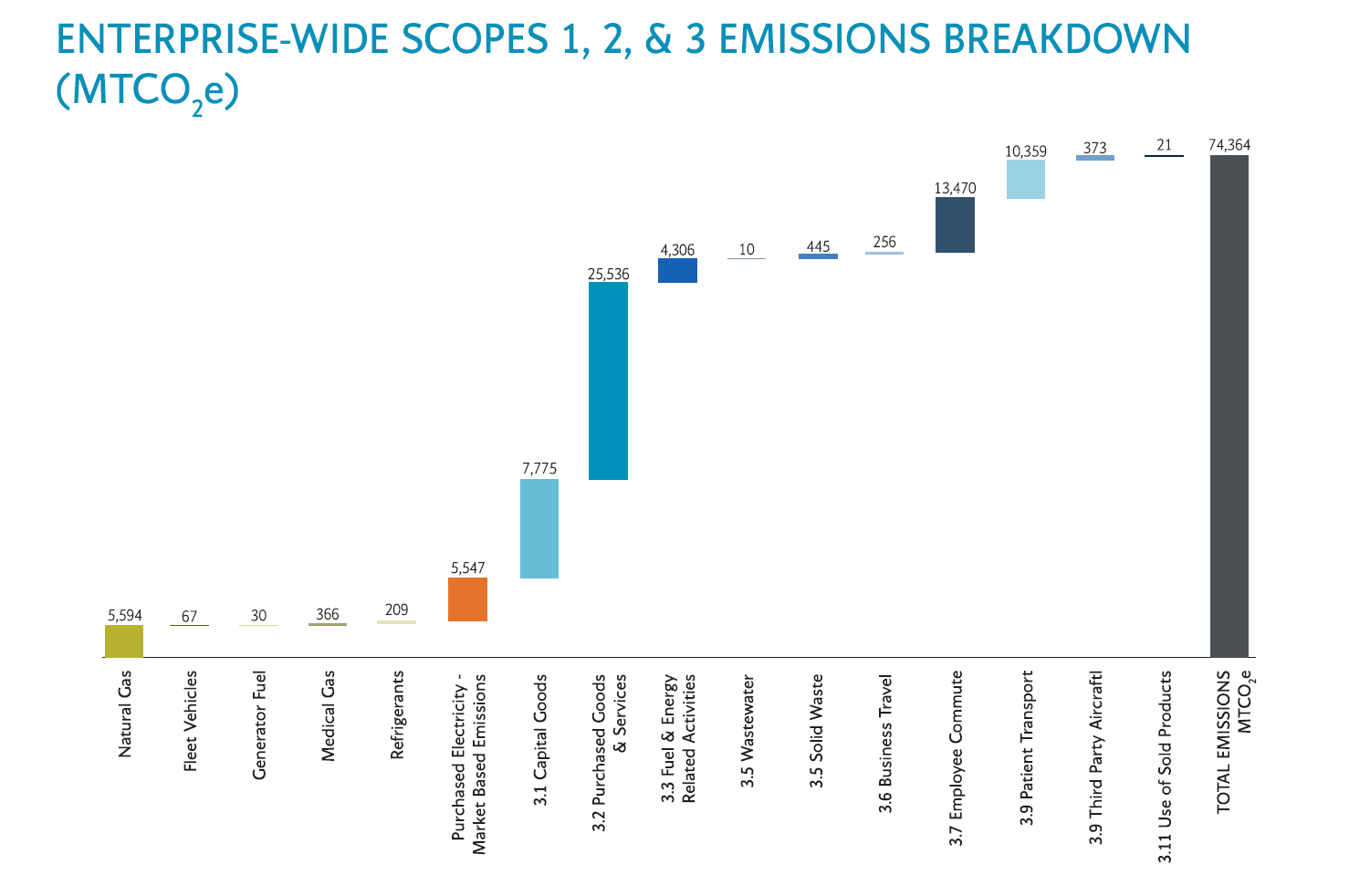
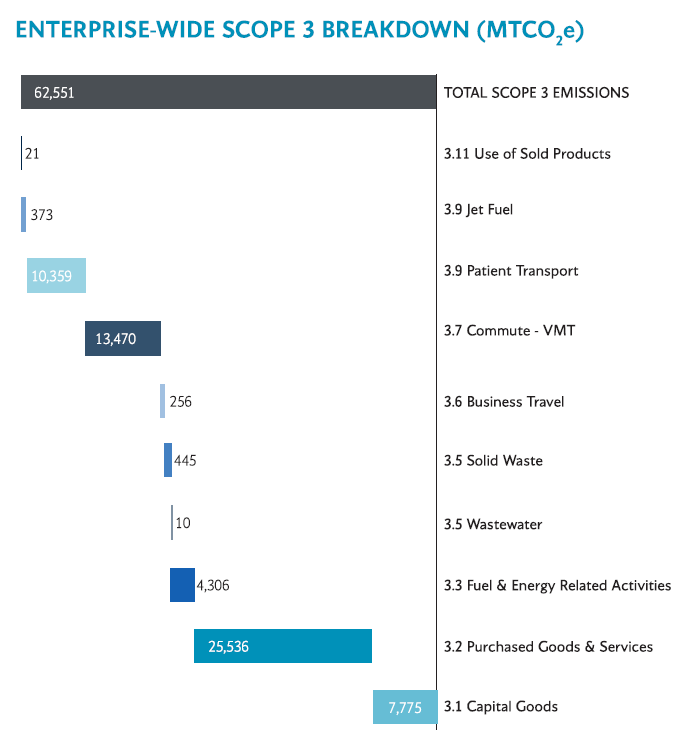
Valley Children's Hospital FY 2023 GHG Emissions Inventory
The table and graph below illustrate a comparison of Scope 1 and 2 carbon emissions at Valley Children's, offering insights into emissions efficiency.
In FY2024, Valley Children's total emissions decreased by 9% compared to the baseline year, FY2023. This reduction was primarily driven by a notable decline in Scope 2 and Scope 3 emissions, which fell by 13% and 10%, respectively.
Further analysis revealed that electricity consumption at Valley Children's increased by 6%. However, overall Scope 2 emissions declined due to a cleaner energy grid compared to the previous year. Calpine Solution continues to integrate more renewable energy into its portfolio to align with California's energy regulations, contributing to a cleaner regional gride. As a result, emissions decreased despite the rise in electricity consumptions.
Meanwhile, Scope 1 emissions saw a 1% increase, primarily due to a 6% rise in natural gas consumption in FY2024. All other Scope 1 categories experienced a decline in emissions. On further analysis we found the average energy use intensity (EUI kbtu/sf/y) for Valley Children's is 276.98 kbtu/sf/yr. This is 18% higher than the U.S. average for hospitals which as at 234.3 kbtu/sf/yr as stated in Portfolio Manager Technical Reference: U.S. National Energy Use Intensity.
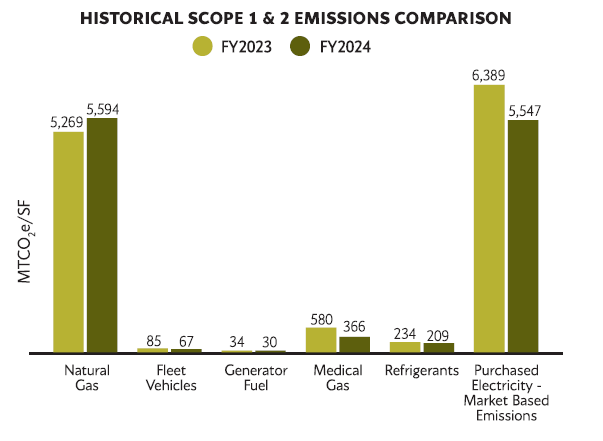

Scope 3 emissions saw major changes in categories 3.1 Capital Goods and 3.7 Employee Commute categories. FY24 expense data showed a 40% reduction in capital goods expenses which results in about 54% decreases in the emissions for this category. Whereas, for employee commute, higher commute miles were reported which could be a result of an increase in in-person employees. The emissions for this category increased by 42%.
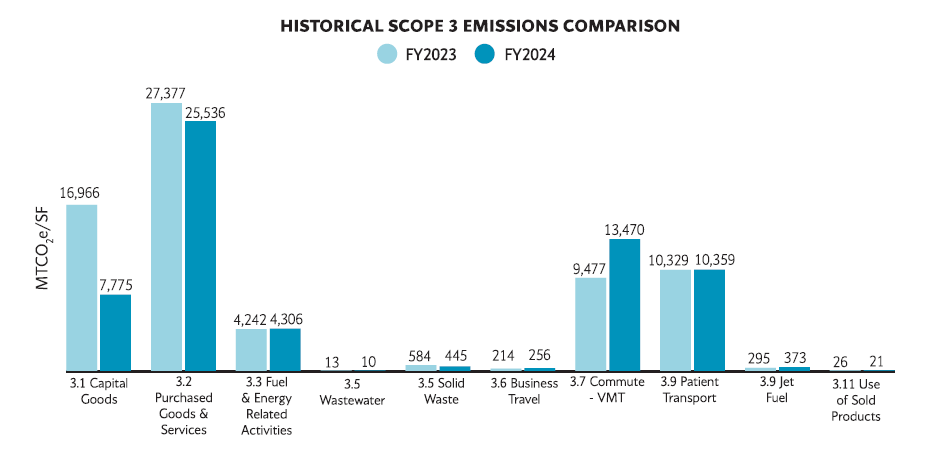

Key Initiatives
Recognition and Partnerships
In 2024, Valley Children’s Hospital became the first hospital in California, and only the second children’s hospital in the nation, to be awarded the prestigious Sustainable Healthcare Certification by The Joint Commission, an independent non-profit accreditation organization. This landmark achievement recognizes Valley Children’s commitment to reducing its carbon footprint, combating climate change and actively pursuing crucial conservation and preservation initiatives.
Valley Children’s was also one of the first hospitals in the country to sign the U.S. Department of Health and Human Services (HHS) Health Sector Climate Pledge, a nationwide effort to address the impacts of climate change on public health. Successful implementation of Valley Children’s energy resilience program will be used as a model for other HHS Health Sector Climate Pledge signees.
Watch the video below to learn more about Valley Children's commitment to creating energy resiliency and addressing the impact of climate change on families.